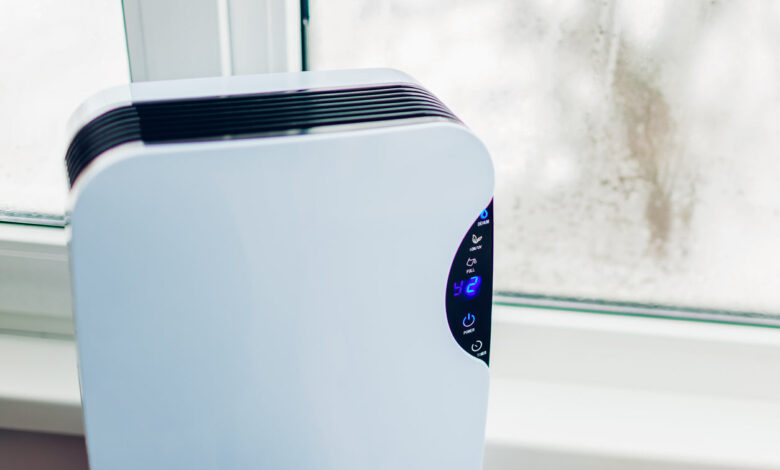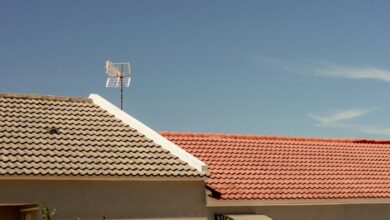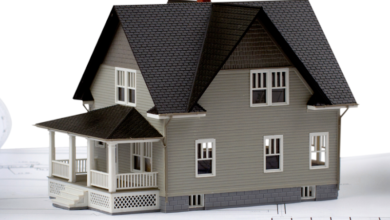Why Every Homeowner Needs a Dehumidifier in Their Attic

Introduction
Maintaining the air quality in your home is crucial for its residents’ health and the building’s longevity. One often-overlooked area in this regard is the attic, which plays a significant role in air circulation throughout your home. Ensuring that your attic remains free from excess humidity is essential, and one effective way to achieve this is by using a dehumidifier. In this article, we will explore why every homeowner needs a dehumidifier for attic, focusing on its benefits, installation, and maintenance.
Understanding Humidity
Humidity refers to the amount of moisture present in the air. When humidity levels are too high, it can lead to a host of problems in your home. Ideally, the humidity level in a home should be between 30% and 50%. When levels exceed this range, it can create a conducive environment for mold and mildew, cause structural damage, and even pose health risks to the inhabitants.
Problems Caused by High Humidity
High humidity in your attic can lead to several problems, including:
- Mold and Mildew Growth: Mold and mildew thrive in damp environments, and an overly humid attic provides the perfect conditions for their growth. This not only damages your property but can also lead to serious health issues such as respiratory problems and allergies.
- Structural Damage: Excess moisture can weaken the structural integrity of your home. It can cause wood to rot, metal to rust, and insulation to deteriorate, leading to costly repairs.
- Health Issues: High humidity can exacerbate health problems such as asthma and allergies. It can also create an uncomfortable living environment, affecting overall well-being.

Importance of Dehumidifiers
Dehumidifiers are devices designed to remove excess moisture from the air, thereby reducing humidity levels. They work by drawing in moist air, cooling it to condense the water vapor, and then releasing the dry air back into the room. Using a dehumidifier in your attic can offer several benefits:
- Prevents Mold and Mildew: By maintaining optimal humidity levels, dehumidifiers prevent the growth of mold and mildew.
- Protects Your Home: Reducing humidity levels helps protect your home’s structure and insulation from damage.
- Improves Air Quality: Dehumidifiers enhance the overall air quality, making your home a healthier place to live.
Attics are particularly vulnerable to humidity issues due to their location and the potential for poor ventilation. Installing a dehumidifier in your attic can help mitigate these problems and maintain a healthy home environment.
Types of Dehumidifiers
There are several types of dehumidifiers available, each with its advantages:
- Desiccant Dehumidifiers: These use a desiccant material to absorb moisture from the air. They are effective in lower temperatures and are often quieter than other types.
- Refrigerant Dehumidifiers: These work by cooling the air to condense moisture. They are ideal for larger spaces and higher humidity levels.
- Whole-House Dehumidifiers: Integrated with your home’s HVAC system, these dehumidifiers provide comprehensive humidity control throughout your home, including the attic.
Symptoms of High Humidity in Attics
Identifying high humidity in your attic can be straightforward if you know what signs to look for:
- Visible Mold or Mildew: The presence of mold or mildew is a clear indicator of high humidity.
- Musty Odors: A persistent musty smell often accompanies mold growth and dampness.
- Water Stains or Dampness: Check for water stains on the ceiling or walls and feel for dampness in the insulation or wood.
Causes of High Humidity in Attics
Understanding the causes of high humidity in your attic is crucial for effective prevention and management:
- Poor Ventilation: Inadequate airflow can trap moisture in your attic, leading to high humidity levels.
- Roof Leaks: Leaks in your roof can introduce excess moisture into your attic.
- Insulation Issues: Improper or damaged insulation can contribute to humidity problems by allowing warm, moist air to enter the attic.
Diagnosing Humidity Problems
To effectively address humidity issues in your attic, proper diagnosis is essential:
- Tools for Measuring Humidity Levels: Hygrometers and moisture meters can help you measure the humidity levels in your attic accurately.
- Professional Assessments: Hiring a professional to assess your attic’s humidity levels and identify potential issues can provide you with a comprehensive understanding of the problem.
- DIY Inspection Tips: Regularly inspect your attic for signs of high humidity, such as mold, dampness, and musty odors.
Installing a Dehumidifier in Your Attic
Proper installation of a dehumidifier in your attic is crucial for optimal performance:
- Step-by-Step Installation Guide: Follow the manufacturer’s instructions carefully. Ensure the unit is placed in a central location with adequate airflow and a power source.
- Safety Precautions: Be mindful of electrical safety and avoid placing the dehumidifier near flammable materials.
- Professional Installation vs. DIY: Depending on your comfort level and the complexity of the installation, you may choose to hire a professional or install the unit yourself.
Maintenance and Care for Dehumidifiers
Regular maintenance is key to ensuring your dehumidifier operates efficiently:
- Regular Cleaning and Upkeep: Clean the unit’s filter and water reservoir regularly to prevent mold and bacteria buildup.
- Troubleshooting Common Issues: Familiarize yourself with common issues such as reduced efficiency or water leaks and how to address them.
- When to Replace Your Dehumidifier: If your unit is no longer performing effectively despite regular maintenance, it may be time to consider a replacement.
Preventive Measures for Attic Humidity
In addition to using a dehumidifier, there are several preventive measures you can take:
- Improving Attic Ventilation: Install vents or fans to promote air circulation and reduce humidity levels.
- Repairing Leaks and Insulation: Fix any roof leaks and ensure your attic is properly insulated to prevent moisture intrusion.
- Regular Maintenance Checks: Regularly inspect your attic to identify and address potential humidity issues early.
Conclusion
In conclusion, maintaining optimal humidity levels in your attic is essential for protecting your home and ensuring a healthy living environment. Dehumidifiers play a crucial role in this process, offering numerous benefits such as preventing mold growth, protecting your home’s structure, and improving air quality. By choosing the right dehumidifier, installing it correctly, and following preventive measures, you can effectively manage humidity levels in your attic.



